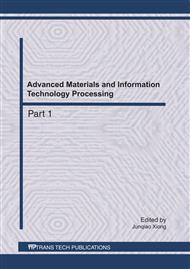p.1257
p.1263
p.1268
p.1272
p.1279
p.1286
p.1291
p.1297
p.1301
Research on Educational Software Unified Process Model Based on Education Domain Knowledge
Abstract:
The concept of educational software and the development process are inconsistent in the educational software engineering. Based on education domain knowledge, educational software can be divided into three types: educational network resources, learning platforms and teaching management information systems. And the process of educational software development can be described as Educational Software Unified Process Model. This paper proposes the Educational Software Unified Process Model with five stages mentioned above based on Waterfall model, and illustrates that its key processes for the requirement analysis phase is the use-case analysis and for the design phase is platform architecture, and describes a detailed analysis to the central role of document-driving in the Educational Software Unified Process Model. At last, the Educational Software Unified Process Model is strongly supported by some cases in our related projects development.
Info:
Periodical:
Pages:
1279-1285
Citation:
Online since:
July 2011
Authors:
Price:
Сopyright:
© 2011 Trans Tech Publications Ltd. All Rights Reserved
Share:
Citation:


